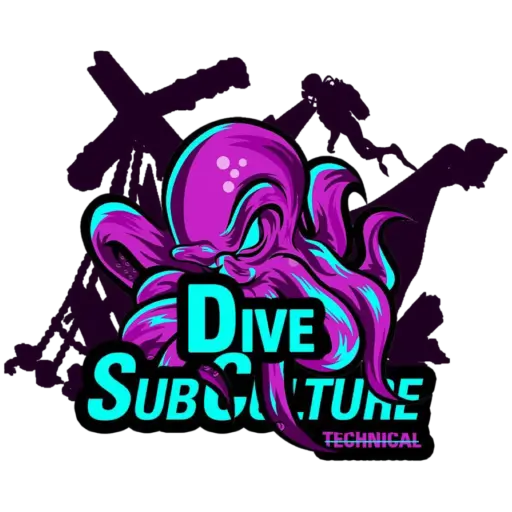TDI Nitrox Course

The TDI Nitrox course at Dive Subculture Technical is tailored for divers who want to enhance their underwater experience by learning to safely utilize enriched air nitrox (EANx) for recreational diving. This course covers essential skills and knowledge required to dive with nitrox, allowing for longer bottom times and reduced nitrogen absorption.
Participants will explore the benefits and limitations of using nitrox, including understanding oxygen exposure, gas planning, and proper mixing techniques. The course emphasizes safety protocols, enabling divers to manage their gas supplies effectively and minimize the risks associated with higher oxygen levels.
The TDI Nitrox course includes a combination of theoretical instruction, confined water training, and practical open water dives. Students will engage in comprehensive dive planning exercises, learn how to analyze nitrox mixtures, and practice handling equipment configured for nitrox use.
This course serves as a vital stepping stone for divers aiming to expand their skills and dive deeper into the realm of technical diving. With a focus on safety, knowledge, and proficiency, graduates are well-prepared to pursue further training, including courses like Advanced Nitrox or Trimix diving.

TDI Nitrox
– The Open water diver who is interested in learning more about nitrox mixtures
– The Open water diver who is interested in extending their bottom time
– The Certified Diver who has interest in moving forward with technical diving education
– Minimum age: 18
– Certification: Open Water Diver with at least 25 logged dives.
– Must be able to answer “no” to medical questions or obtain clearance from a physician.
– The benefits, hazards, and proper procedures for using nitrox mixes from 22 through 40 percent oxygen content
– Equipment considerations, cylinder labeling, analyzing nitrox mixtures, and gas blending procedures
– Ability to dive utilizing EAN-22 to EAN-40 without direct supervision
– Ability to enroll in TDI Advanced Nitrox, TDI Decompression Procedures, TDI Semi-closed Rebreather courses
– Demonstrate understanding of EAD calculations
– Perform oxygen analysis for nitrox mixtures
– Satisfactorily complete the TDI Nitrox course and written examination
Course Duration - 1 Day (2 Days if Diving)
Academics 1 Day
Pool Session None
Open Water 2 Dives
Course Structure
- History of Enriched Air Nitrox (EAN): Understand the development and evolution of EAN in diving.
- Physiology:
– Oxygen: Explore the role and effects of oxygen on the body.
– Nitrogen: Examine the impact of nitrogen during dives. - Physics:
– Pressure Review: Review basic concepts of pressure in diving.
– Partial Pressures: Understand the concept of partial pressures related to gas mixtures. - Equipment Considerations:
– Forty Percent Oxygen and Less: Identify equipment considerations for dives with EAN containing 40% oxygen or less.
– Above 40 Percent Oxygen: Address equipment needs for EAN mixtures exceeding 40% oxygen. - Dive Tables:
– Equivalent Air Depth (EAD): Introduce EAD for demonstration purposes.
– EAN Tables: Learn to use EAN dive tables.
– Switching Mixes: Understand procedures for switching gas mixes on repetitive dives. - Dive Computers:
– Mix Adjustable: Explore dive computers that allow for adjustable gas mixes.
– Oxygen Integrated: Learn about dive computers with integrated oxygen monitoring. - Advantages and Disadvantages of EAN:
– Physiological Advantages: Discuss using EAN for benefits related to air tables or computers.
– Extended Bottom Times: Understand how EAN can extend no-decompression limits or reduce surface intervals.
– Oxygen Toxicity: Recognize hazards and depth limits associated with oxygen toxicity.
– Myths vs. Facts: Address common misconceptions about EAN mixtures. - Procedures:
– Oxygen Analyzer: Learn the use and theory behind oxygen analyzers.
– Gas Analysis and Logging: Understand how to analyze and log gas mixtures.
– Filling Station Log: Know how to complete and sign an EAN fill log, including Maximum Operating Depth (MOD) and oxygen content. - Common Mixing Procedures:
– Partial Pressure Blending: Explore techniques for blending gases using partial pressures.
– Continuous Blending: Understand continuous blending methods.
– Membrane Separation System: Learn about the membrane separation system for gas mixing.
- Dive Planning with TDI Tables:
-Use TDI Tables to plan a nitrox dive, incorporating Equivalent Air Depth (EAD) calculations. Create a written dive plan for a nitrox dive with a Maximum Operating Depth (MOD) based on a partial pressure of oxygen (PO₂) between 1.3 and 1.6, adjusted for environmental conditions. - Oxygen Analyzer Use:
– Demonstrate the correct operation of an oxygen analyzer for assessing gas mixtures. - Cylinder Management and Labeling:
– Show proper cylinder management and labeling practices, adhering to local regulations and standards. - Pre-Dive Briefing:
– Conduct a simple pre-dive briefing, which may be simulated if actual dives are not included in the program. Program a nitrox computer with the correct oxygen percentage if applicable. - Cylinder Analysis Logging:
– Log at least one nitrox cylinder analysis, documenting the Maximum Operating Depth (MOD) and oxygen content.
In order to complete this course, students must:
Satisfactorily complete the TDI Nitrox Course written examination.
Demonstrate understanding of oxygen analysis for nitrox mixtures.

Equipments Required (All Technical Courses)
- Primary and Secondary Regulators (Depends on Configuration)
- Technical Back-mount BCD (Wing & Bladder) or a Technical Sidemount Harness
- Primary Mask + Back Up Mask
- Wet Notes and/or Slates
- One Lift Bag and/or SMB
- Dive Computer and Timing Device/or Backup Computer
- Decompression Regulator(s)
- Reels and Spools
- Compass
- Torch and Back Up Torches
- Exposure Protection 3mm/5mm or Dry Suit

Downloads
Please sign them and send them back to via email. Medical Questionnaire not applicable for this course











